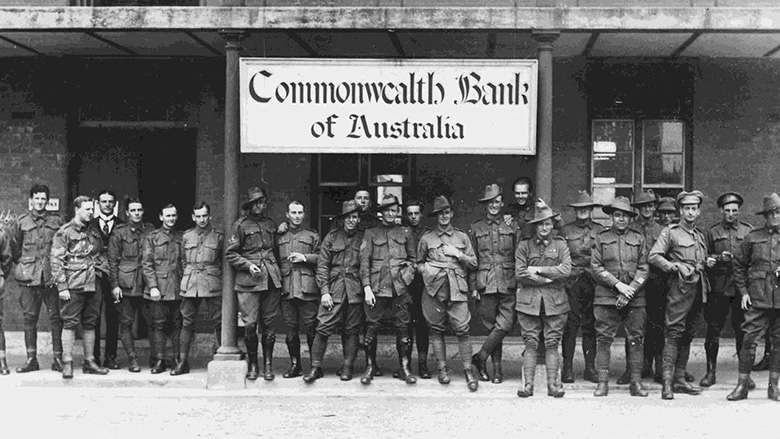On Remembrance Day, we commemorate those CBA staff members who served in the armed forces during times of conflict and who from World War One onwards made the ultimate sacrifice in defence of the nation.
Remembrance Day was initiated at the end of WW1 to mark the Armistice which came into effect on 11 November 1918 when the guns finally fell silent on the Western Front after four years of horrendous warfare.
Of the 241 men from CBA who joined up between 1914 and 1918, 26 never returned. Today they lie at peace in foreign fields around the globe, on land tended by the Commonwealth War Graves Commission, ensuring that their commitment to freedom will never be forgotten.
In the years after, a further 307 bank staffers gave their lives in World War Two out of the 2,900 CBA people who served. Like their compatriots from WW1, their names are etched on the bank’s Roll of Honour at CBA’s former headquarters in Martin Place in Sydney. They too are recalled on this day.
Since 1997, when then-Governor-General Sir William Deane formally declared 11 November as the day to commemorate those Australians who died or suffered in the country’s cause in all wars and conflicts, we remember all of those past and present CBA staffers for their service on behalf of a grateful nation.
In doing so, we recall the words of CBA’s first governor (CEO) Sir Denison Miller, who, at the unveiling in 1918 of the memorial for the bank’s war dead, said that the “first place of honour must be given to those who made the supreme sacrifice; they gave their all, their lives, that humanity might live.”
That remains true today as it was more than 100 years ago. As The Last Post is sounded on Remembrance Day at the eleventh hour, of the eleventh day, of the eleventh month we will pay tribute to our fallen. They never returned but they will never be forgotten.
“They shall grow not old, as we that are left grow old;
Age shall not weary them, nor the years condemn.
At the going down of the sun and in the morning
We will remember them.”
Lest we forget.




